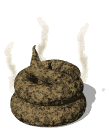DrYeast wrote:HSA is nothing to worry about, commercial brewers worry about it because they worry about everything, and they're also dropping hot wort from high up into a kettle, which is way more aeration than we're ever going to do as homebrewers (you COULD aerate your wort this much, but not by stirring your wort with a spoon. If you're smoking the cousin and are paranoid, just stir slowly without introducing bubbles.
I'm probably a little too paranoid about HSA. When I brewed my first all grain batch about 15 years ago, I made the rookie mistake of not using tubing to drain my mash tun. Just let it drop from the outlet to the bottom of the kettle. It was beneficial in that I learned exactly what oxidized beer tasted like -the box your Wheaties came in. But it was a bad enough experience that I now try to minimize movement of wort above 75-80F.
DrYeast wrote:As for co- or post-fermentation readings, don't bother with stirring, unless you added a heavy sugar during fermentation, I'm pretty sure that the differences from top to bottom of your fermenter are negligible. I haven't tested this, but if your wort was mixed before you added it to the fermentor, then it mixed as you added it, then it mixed when you aerated/oxegynated it, and then it mixed as the yeast were working (swirling and churning during fermentation), I think that your wort is as mixed as it's going to get.
I definitely agree that the beer is well mixed through primary and through most of seconday. It's when I go to keg that I get concerned. I think with such a reduction in yeast activity, there will be some sort of a concentration gradient in that carboy. How severe? No idea. Probably insignificant. But I am going to pick up a refractometer and experiment when I keg my current batch just to satisfy my curiosity.
Thanks to all of you for the great discussion. Good stuff here. I'll post my results when I'm done in a few weeks.







